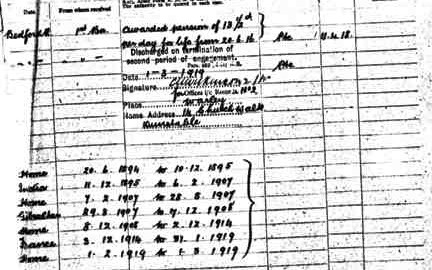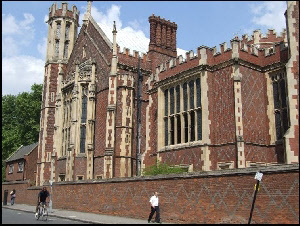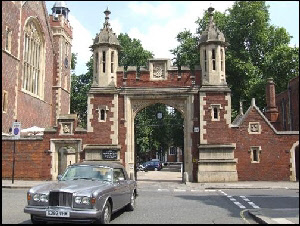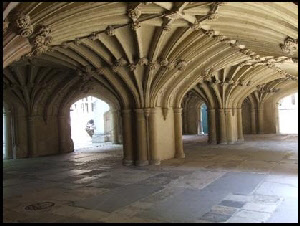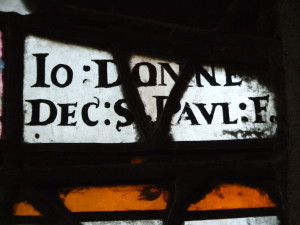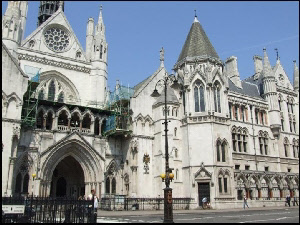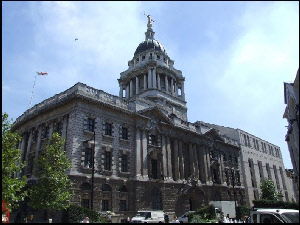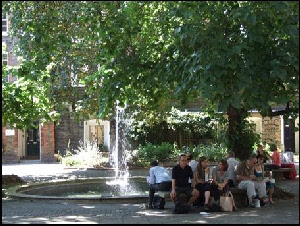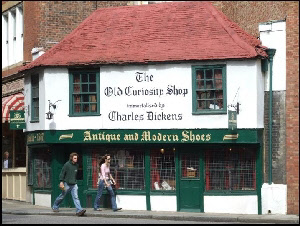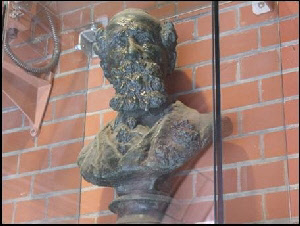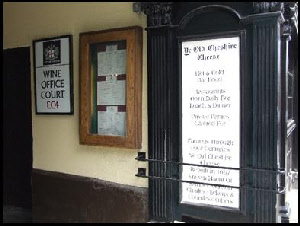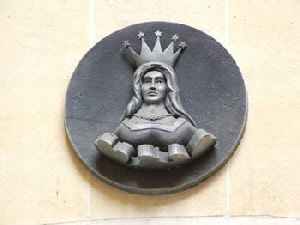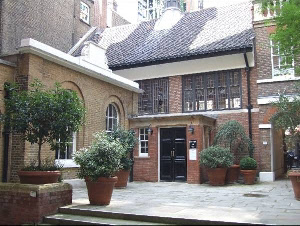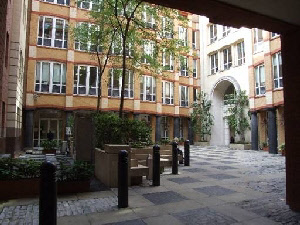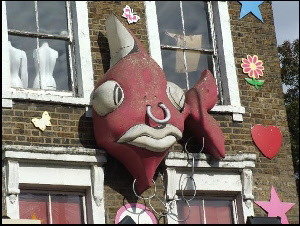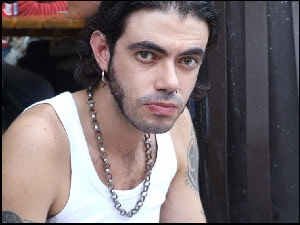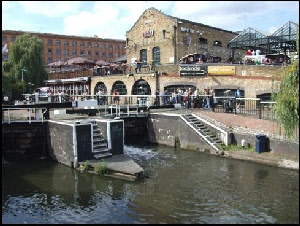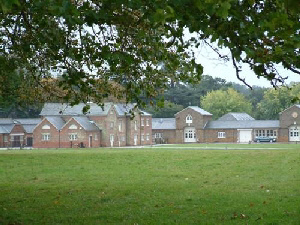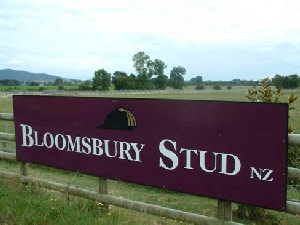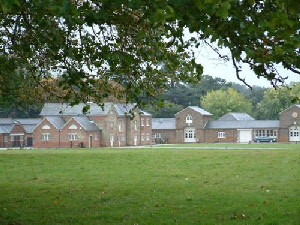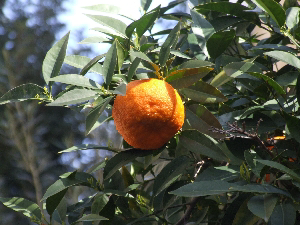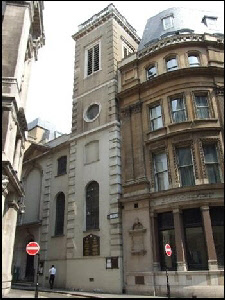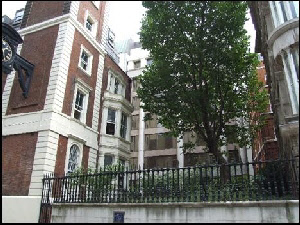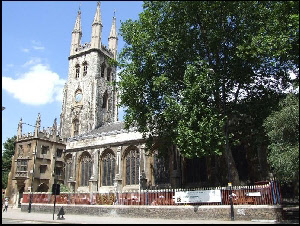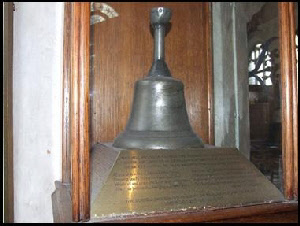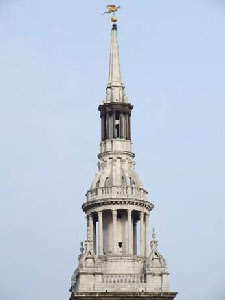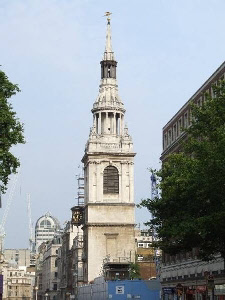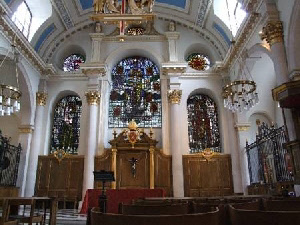Compiled by Pat Field
Annotated by Ewart Tearle and Pat Field Mar 2010
DUNSTABLE BAPTISMS
ST PETER
Dunstable Parish CD up to 1813 – none
Dunstable Parish CD 1813 – 1852
27 Jan 1834 ADA dau of James Tearle, Horsekeeper.
Adah dau of James 1806 and Mary Ann nee Webb. Joseph 1737
Fiche 1853-1945
July 8 1853 GEORGE NASH TEARLE son of Richard & Kezia Tearle Labourer of West Street
Dunstable
Son of Richard Webb Tearle and Kezia nee Wright. Gson of James 1806, married Mary Ann Hallifax.
Joseph 1737.
July 28 1872 ARTHUR TEARLE son of Charles & Sarah Tearle – Lab Victoria Street Dunstable
Son of Charles 1840 & Sarah nee Hill. Married mary Ann Bullock. Joseph 1737.
May 28 1890 FLORENCE EMILY TEARLE dau of Charles & Annie Tearle Painter of Dunstable
Dau of Charles 1836 & Annie nee Eastment. Married George Spivey. Joseph 1737.
June 10 1894 FREDERICK JAMES TEARLE son of Charles Bowler & Constance Tearle Lab of Church Walk Dunstable born Jan 15 1885
Son of Charles Bowler T 1848 & Constance nee Dickens. Married Maggie Clara Weller. Joseph 1737.
June 10 1894 ARTHUR THOMAS TEARLE son of Charles Bowler & Constance Tearle Lab of Church Walk Dunstable Born July 9 1886
Son of Charles Bowler T 1848 & Constance nee Dickens. Married Beatrice Putman. Joseph 1737.
Nov 1 1908 FREDERICK WILLIAM HENRY TEARLE son of James Henry and Edith Lydia Tearle Warehouseman of 64 Edwards Street Dunstable
Son of James Henry T 1884 & Edith Lydia nee Morgan. Sergeant in the Australian Army in WW2.
Married Patricia Bridget Cotter. John 1741.
Sept 7 1911 IVY CONSTANCE TEARLE dau of Albert Edward and Norah Kate Tearle of 37 Church Street Dunstable Motor Fitter
Ivy 1906, dau of Albert Edward 1879 & Norah Kate nee Cardell nee Pecks. Gdau Charles Bowler T.
Joseph 1737.
Sept 7 1911 WINIFRED IRENE TEARLE dau of Albert Edward and Norah Kate Tearle of 37 Church Street Dunstable Motor Fitter
Winifred 1908, dau of Albert Edward 1879 & Norah Kate nee Cardell nee Pecks. Joseph 1737.
Sept 7 1911 ALBERT EDWARD TEARLE son of Albert Edward and Norah Kate Tearle of 37 Church Street Dunstable Motor Fitter
Albert 1910 son of Albert Edward 1879 & Norah Kate nee Cardell nee Pecks. Joseph 1737
Mar 18 1916 DORIS SYLVIA TEARLE dau of Louisa Sylvia Tearle of Rokley Gt Northern Road Dunstable Domestic Servant
Dau of Louisa Sylvia Tearle 1890, gdau Charles 1863 and Louisa Caroline nee Green. Joseph 1737.
Dec 1932 GRACE TEARLE dau of Alfred and Annie Tearle of 8 Richard Street Dunstable
Ethel Grace dau of Alfred 1887 and Annie nee Rathbone. Bap at 18yrs. Married Stanley Capp.
William 1749.
?Dec 1934 ?ELIZABETH TEARLE dau of Arthur and Elizabeth Tearle of 10 Chiltern Road Dunstable Lab born 17 ? 1916 ?
Irene Elizabeth 1916, dau of Arthur 1877 and his second wife Elizabeth Saunders. Gdau Tabitha 1854. Died 1940 and is buried in Dunstable Cemetery
Nov 15 1939 STANLEY ALBERT TEARLE son of Alfred & Annie Tearle (address unreadable) Machine Operator
Stanley Albert 1913 son of Alfred 1887 and Annie Rathbone – he married in Q4 1939, probably the reason for a late baptism. William
1749. Sept 30 1945 JOHN HAROLD TEARLE son of Alfred George and Vera Dorothy Tearle of 35 Grantham Road Luton Drayman born 2nd July 1945 UNK poss son of Alfred George 1901 and Vera Dorothy Irons) NOTE; These records were badly filmed and lots of pages were completely unreadable , the original
records may reveal more if needed.
DUNSTABLE MARRIAGES
23 Nov 1710 WILLIAM TALE – ANN FORD of Stanbridge
UNK. If this was his first marriage, the latest William could be born would be 1694. The nearest to this is William 1699, son of Thomas and Sarah nee Pepyatt, so this is not him. The only likely candidate on the Tree is William 1671 Stbg son of John 1645 and Jane on the John 1560 Tree (Nathaniel’s Tree). Unfortunately for us he married an Elizabeth and they had children from 1707 to 1722, so it isn’t him. A likely person may be William 1670 of Stanbridge, whose parents were John 1645 and Jane nee Purrett. William was the grandson of John 1620 and he married Susannah; they had a Mary Tearle in 1697 and another Mary in 1700. If Susannah died, it could well be this William who married Ann Ford.
There is a birth to this couple recorded in the Stanbridge PRs:
1711 NO21 Eliz d Wm-Ann T
DUNSTABLE PRIMITIVE METHODIST CHURCH
7 March 1908
ARTHUR THOMAS TEARLE 21 Compositor 14 Church Lane Dunstable Father Charles Bowler
Tearle dec Lab
BEATRICE PUTMAN 19 72 Bury Park Road Luton Father Mark Putman Lab
Witnesses Mark Putman and Ellen Putman
Arthur Thomas T 1887, son Charles Bowler T 1848 and Constance nee Dickens. John 1741
DUNSTABLE WESLEYAN, THE SQUARE, DUNSTABLE
28 July 1914
ROBERT TEARLE 26 Batchelor Hat Blocker 41 High Street North Dunstable Father Alfred Tearle
Dealer
HETTY FLORENCE BOURN 23 Spinster Hat Machinist 41 High Street Dunstable Father William
Stow Bourn Gas Foreman
Witnesses Elsie Elizabeth Bourn and William Bourn Robert 1887, son Alfred 1866 and Mary Ann nee Roe. G-gson George 1797 and Mary nee Hill. John
1741.
ST PETERS PARISH CHURCH
9 Aug 1852
RICHARD WEBB TEARLE 27 Batchelor Lab of West Street Father James Tearle Lab
KEZIA WRIGHT 32 Widow West Street Father John Nash Farmer
Witnessed by John Tearle and Harriett Tearle
Richard Webb T 1826, stonemason, son James 1806 and Mary Ann nee Webb. Kezia died young, and their son George Nash T lived with Richard’s parents. G-gson of Joseph 1737.
10 July 1859
CHARLES TEARLE 23 Painter & Glazier High Street Father George Tearle Groom
ANN EASTMENT 20 Sewer Church Street Father George Eastment Gen Dealer
Witnesses George Eastment and Elizabeth Tearle
Charles 1836 son George 1809 and Elizabeth 1810. George is descended from Joseph 1737 and Elizabeth from John 1741. Charles is the g-gson of them both. One of their daughters, Charlotte Louisa, emigrated to NZ and died in Auckland 1947.
1868 September
CHARLES BOWLER TEARLE 21 Batchelor Lab of High Street Father James Tearle Ostler
CONSTANCE CLEAVER DICKENS 22 Spinster Father Simon Cleaver Farmer
Witnesses Thomas John Smith and Clara Cleaver Charles Bowler T 1848, brother of Richard Webb T above, son of James 1806 and Mary Ann nee Webb. Bowler is named after Mary Ann’s mother. Joseph 1737.
24 December 1871
CHARLES TEARLE 31 Batchelor Lab Dunstable Father William Tearle Lab
SARAH HILL 32 Spinster Dunstable Father James Hill Labourer
Witnesses George Tearle and Eliza Allen
Charles 1840, son William 1814 and Hannah nee Pratt. G-gson Joseph 1737.
7 June 1874
HARRY JOHN BULL 20 Batchelor Blocker High Street Father John Bull Shoemaker
EMILY TEARLE 21 Spinster ? High Street Father James Tearle Groom
Witnesses Joseph Boskett and Clara Tearle
Emily 1852, sister of Charles Bowler T and Richard Webb T above.
21 Dec 1874
LEVI TEARLE 20 Batchelor Blocker High Street Father William Tearle Stoker Gas Works
MARY SUMMERFIELD 21 Spinster High Street Father Thomas Summerfield Lab
Witnesses J. L Spittel and ? could be Fanny Mead or Ward got cert
Levi 1855 of Thorn, son William 1814 and Hannah nee Pratt. Joseph 1737.
29 Oct 1882
HENRY GEORGE GILBEY 22 Bat Baker Church Street F Daniel George Gilbey ? Officer
MARY ANN TEARLE 19 Spinster Dunstable Father Charles Tearle Straw Dealer
Witnesses ? Gilbey and Harriett Tearle – got cert
She was registered as Mary Hannah, but married as Mary Ann 1864, dau Charles 1831 and Sarah
Ann nee Brandon. John 1741
2 Jan 1905
JAMES HENRY TEARLE 21 Bat Straw Hat Manufacture High Street South F George Tearle lab
EDITH LYDIA MORGAN 22 Spinster Straw Hat Manufacture Dunstable Father ?Morgan
Witnesses John Haines and Rosa Dyer got cert
James Henry 1844 Dunst, son George 1851 and Louis nee Finch. Emigrated to Australia 1912. Lived
in Brisbane. John 1741.
10 March 1906
ALBERT EDWARD TEARLE 26 Batchelor Mechanic St. Peters Rd Dunstable Father Charles
Bowler Tearle Lab
NORAH KATE CARDELL 29 Widow St Peters Street Dunstable father Lot Pecks? Platelayer
Witnesses Francis Bowler Tearle and Beatrice Pecks
Albert Edward 1879 Dunst, son Charles Bowler T and Constance Cleaver nee Dickens. Joseph 1737.
8 June 1908
HERBERT ERNEST BURGESS 20 Batchelor Straw Hat Trade 64 Edward Street Father John
Burgin deceased Blocker
PRISCILLA TEARLE 21 Single Domestic Servant 64 Edward Street Father George Tearle lab
Witnesses William Herbert Pateman and Edith Lydia Tearle
Priscilla 1886 Dunst, dau George 1851 and Louisa nee Finch. Went to see brother James Henry T when he was living in NZ for a while. Edith Lydia is her sister-in-law. John 1741.
23 Oct 1909
SYDNEY JOHN TEARLE 28 Batchelor Lab Church Walk Dunstable Father Charles Bowler Tearle
deceased lab
ALICE ANN NORTHWOOD 26 Spinster Church Walk Dunstable Father Leonard William Northwood
Blockmaker
Witnesses George Northwood and Beatrice May Saunders
Sydney John 1880, son Charles Bowler T and Constance Cleaver nee Dickens. Awarded the Military
Medal in WW1 for rescuing men while under fire. Joseph 1737.
26 Dec 1912
ALFRED TEARLE 24 Batchelor Lab Church Street Dunstable Father George Tearle dec Lab
ANNIE RATHBONE 23 Spinster Printer Church Street Dunstable Father Samuel Rathbone Shepherd
Witnesses John Henry Tearle and Lily Northwood.
Alfred 1887, son George 1861 and Sarah Jane nee Horn. G-gson Jabez 1792. Witnesses are Alfred’s
brother and soon-to-be sister-in-law. William 1749.
7 June 1913
JOHN HENRY TEARLE 28 Batchelor Telegraph Wireman Alfred Street Dunstable Father George
Tearle dec Lab
LILY NORTHWOOD 26 Spinster Litho Printer Church Walk Dunstable Father Leonard William
Northwood Blockmaker
Witnesses Amelia Mead and Harry Northwood
John Henry T 1885, son George 1861 and Sarah Jane nee Horn. G-gson Jabez 1792. William 1749.
8 Sept 1913
GEORGE SPIVEY 33 Batchelor Butcher Stuart Street Luton Father William Spivey Baker
FLORENCE EMILY TEARLE 32 Spinster Milliner High Street South Dunstable Father Charles Tearle
Painter
Witnesses Walter James Tearle and Lizzie Lavinia Spivey
Florence Emily T 1881, dau Charles 1836 and Annie nee Eastment. Joseph 1737.
18 June 1921
WILLIAM THOMAS MEAD 20 Bat Builder Victoria Street Dunstable Father Amos Mead Lab
AMELIA TEARLE 28 Single Alfred Street Dunstable Father George Tearle dec Lab
Witnesses Frank Tearle and Selina Gore
Amelia 1892, dau George 1861 and Sarah Jane nee Horn. Witnesses are her youngest brother and her soon-to-be sister-in-law. Died at only 37yrs. G-gdau Jabez 1792. William 1794.
2 May 1925
DONALD RALPH TEARLE 20 Batchelor Engineer Eaton Bray Father Richard Ralph Tearle Retired
Policeman
PATTY MURIEL KENDALL 21 Spinster Clerk St. Peters Road Dunstable Father William Thomas
Kendall Gardener
Witnesses William Thomas Kendall and Leonard Leslie Tearle
Donald Ralph T 1904, son Richard Ralph T 1870 and Lillian Rosa nee Lofts. G-son Nathaniel 1839.
Leonard Leslie is Donald’s eldest brother. John 1560.
24 December 1938
STANLEY WILLIAM CAPP 25 Batchelor Bricksetter 44 Church Road Woburn Sands Father James
Thomas Capp Bricklayer
ETHEL GRACE TEARLE 24 Spinster Book Examiner 47 Great Northern Road Dunstable Father
Alfred Tearle Maintenance Worker
Witnesses Alfred Tearle and Horace James Capp
Ethel Grace T 1914, dau Alfred 1887 and Annie nee Rathbone. Born in Bethnel Green, London. Died 2001. Witness above is her father. G-dau George 1861 and Sarah Jane nee Horn. William 1794
DUNSTABLE CEMETERY BURIALS
1861-1940 – Fiches 1-21
1868 Sept 15 HANNAH TEARLE 24yrs Sewer London Road
Hannah 1844, dau of James 1806 and Mary Ann nee Webb. Joseph 1737.
1869 May 13 JAMES TEARLE 63yrs Groom London Road
James 1806, son Richard 1778 and Mary nee Pestel. Joseph 1737.
1871 Aug 24 ROSE EMILY TEARLE 1yr dau of Chas Tearle Ashton Street Dunstable
Dau of Charles 1836 and Annie nee Eastment. Joseph 1737.
1872 May 11 MARY ANN TEARLE 67yrs Widow High Street South Dunstable
Mary Ann nee Webb wife of James 1806. Joseph 1737.
1872 May 13 JOHN TEARLE 44yrs Lab High Street South Dunstable
John 1830, son of James 1806 and Mary Ann nee Webb. Joseph 1737
1872 Oct 28 ELIZABETH TEARLE 27yrs Plaitmaker Union Street Dunstable
Elizabeth 1845, dau William 1814 and Hannah nee Pratt. G-gdau Joseph 1737
1876 Dec 14 MARGARET TEARLE 5 weeks dau of Charles Tearle Ashton Street
Dunstable
Dau of Charles 1836 and Annie nee Eastment. Joseph 1737.
1881 Nov 11 SUSANNA TEARLE 54yrs Housekeeper High Street Dunstable
Susanna 1827, dau of Abel 1797 and Hannah nee Frost. Housekeeper for her brother Jabez 1836 for
many years. One of the few Tearle headstones in Dunstable cemetery. Thomas 1737 via Fanny 1780.
1884 Sept 2 ANNIE TEARLE 3 days dau of Annie Tearle Church Street Dunstable
Dau of Ann 1858, gdau Charles 1831 and Sarah Ann nee Brandon. John 1741
1885 April 1 MARGARET TEARLE 3 weeks dau of Ann Tearle Union Street Dunstable
Dau of Ann 1851, gdau of William 1814 & Hannah nee Pratt. Joseph 1737.
1889 May 4 CHARLES TEARLE 50yrs Painter King Street Dunstable
Charles 1836, husb Annie nee Eastment, son of George 1809 and Elizabeth Tearle. Joseph 1737.
1890 April 12 GEORGE TEARLE 80yrs Groom High Street Dunstable
George 1809, husb of Elizabeth Tearle, father of Charles 1836 and son of Richard 1778 and Mary
nee Pestell. Joseph 1737
1891 Jan 8 ANNIE TEARLE 32 yrs Sewer Church Street Dunstable
Ann 1858, dau of Charles 1831 and Sarah Ann nee Brandon. “Deaf and dumb from birth.” John 1741.
1891 Feb 14 CHARLES TEARLE 50yrs Lab Union Street Dunstable
Charles 1840, husb Sarah nee Hill, son of William 1814 and Hannah nee Pratt. Joseph 1737.
1892 Jan 18 HANNAH TEARLE 72yrs Sewer Union Street Dunstable
Hannah nee Pratt, wife of William 1814. Joseph 1737.
1892 Oct 6 ELIZABETH TEARLE 82yrs Widow The Square Dunstable
Elizabeth Tearle 1810, dau John 1770 and Mary nee Janes and wife of George 1809. John 1741.
1892 Feb 24 SARAH ANN TEARLE 61yrs Plaiter Church Street Dunstable
Sarah Ann nee Brandon – wife of Charles 1831. John 1741
1893 Aug 11 RICHARD TEARLE 68yrs Stone mason High St South Dunstable
Richard Webb Tearle 1826, son James 1806 and Mary Ann nee Webb. Joseph 1737.
1895 Oct 21 WILLIAM TEARLE 81yrs Gasman Union Street Dunstable
William 1814 son of Richard & Mary nee Pestell. Joseph 1737.
1896 June 23 RUTH ALLEN TEARLE 54yrs High Street Dunstable
Ruth Allen ne Willis, wife of James 1847. Joseph 1737.
1897 May 26 CHARLES TEARLE 67yrs Carter Church Street Dunstable
Charles 1831, son of Thos 1800 and Mary nee Cook, husb Sarah Ann nee Brandon. John 1741.
1900 July 7 MARY MATILDA TEARLE 22yrs Sewer 30 St. Marys Street Dunstable
Mary Matilda nee Weedon, wife of Arthur 1877, who was the son of Tabitha. Mary and Arthur’s son
Reginald born and died EB 1899. Arthur married Elizabeth Saunders in 1905. John 1741.
1901 Aug 31 WINIFRED VERA TEARLE 8 mths dau of Wm Tearle 96 High St South
Dunstable
Dau of William Charles 1869 and Jennie Anstee, gdau Charles Bowler T. Joseph 1737.
1915 Feb 22 ALBERT EDWARD TEARLE 36yrs Mechanic 37 Church Street Dunstable
Albert Edward 1879, son of Charles Bowler T and Constance Cleaver nee Dickens. Joseph 1737.
1915 March 9 THELMA TEARLE 1 mth child of John Henry & Lily Tearle 36 Richard St
Dunstable
Dau of John Henry 1885 and Lily nee Northwood. William 1749.
1915 May 6 ERNEST HARRY TEARLE 45yrs Lab 14 Church St. Dunstable
Ernest 1870, son of Charles Bowler T and Constance Cleaver nee Dickens. Joseph 1737.
1915 Dec 13 JANE TEARLE 43yrs wife of Chas Tearle 4 Downs Road Dunstable
This is Jennie nee Anstee the wife of William Charles Tearle, they are living at 4 Downs Road in the
1911 census. Joseph 1737.
1918 July 27 NORAH KATE TEARLE 42yrs wife of Albert Tearle, 47 Church Street Dunstable
Norah Kate nee Cardell wife of Albert Edward 1879, son of Charles Bowler T. Joseph 1737.
1920 Jan 24 GEORGE TEARLE 44yrs Discharged Soldier 14 Church Walk Dunstable
George 1876, son Charles Bowler T and Constance Cleaver nee Dickens. Fought in France in WW1,
buried with CWGC headstone.
1922 Nov 22 FRANCIS BOWLER 50yrs Packer 11 Church Walk Dunstable
Francis 1872, son of Charles Bowler T and Constance Cleaver nee Dickens. Joseph 1737.
1923 June 28 HETTY FLORENCE TEARLE 33yrs wife of Robert Tearle 40 Belmont Road
Luton
Hetty Florence nee Bourn, wife Robert 1887, gson William 1830 and Ann nee Rogers. John 1741.
1923 July 23 CISSIE NORAH KATE TEARLE 11yrs dau of the late Albert and Kate Tearle 193
Church Street Dunstable
Cissie 1912, dau of Albert Edward and Norah Kate nee Cardell nee Pecks. Gdau Charles Bowler T
and Constance Cleaver nee Dickens. Joseph 1737.
1925 April LEVI TEARLE 70yrs 100 Church Street Luton
Levi 1855 of Thorn, married Mary Summerfield. Son of William 1814 & Hannah nee Pratt. Joseph
1737.
1928 Dec 31 CONSTANCE TEARLE 80yrs Widow of Bowler Tearle 3 Counties Asylum
Arlesly (3 Church Walk Dunstable)
Constance Cleaver nee Dickens the wife of Charles Bowler Tearle. Joseph 1737.
1932 June 27 SELINA FLORENCE TEARLE 42yrs wife of Frank Tearle 24 Worthington Road
Dunstable
Selina nee Gore, wife of Frank Tearle 1899, son George 1861 and Sarah Jane nee Horn. William
1749.
1933 June 29 MILLICENT TEARLE 22yrs Spinster Leavesden Mental Hospital (10 Chiltern
Rd Dunstable)
Millicent 1911, dau of Arthur Tearle 1877 and Elizabeth nee Saunders. Arthur’s mother was Tabitha.
John 1741.
1933 Nov 22 SARAH TEARLE 79yrs Widow 6 White Hart Yard Dunstable
Sarah Jane nee Horn wife of George 1861, son of George 1831 and Hannah Maria nee Janes.
William 1749.
1939 May 27 AUDREY MARINA TEARLE 10mths dau of Frank Tearle and Edith Tearle,
Worthington Road Dunstable
Dau of Frank 1899 and 2nd wife Edith Weaver, married 1937. Frank was the son of George 1861 and
Sarah Jane nee Horn. William 1749.
1940 April 20 LILY TEARLE 53yrs wife of John Henry Tearle 14 Richard Street Dunstable
Lily nee Northwood wife of John Henry1885. Son of George 1861 and Sarah Jane nee Horn. William
1749.
1940 Nov 11 IRENE ELIZABETH TEARLE 24 yrs dau of A Tearle 10 Chiltern Road
Dunstable
Dau of Arthur Tearle and Elizabeth nee Saunders. Arthur was the son of Tabitha 1854, g-gson of
George 1794 and Mary nee Hill. John 1741.
